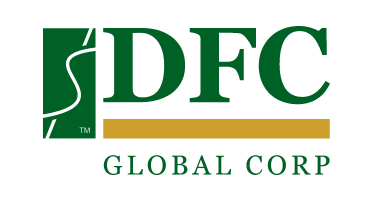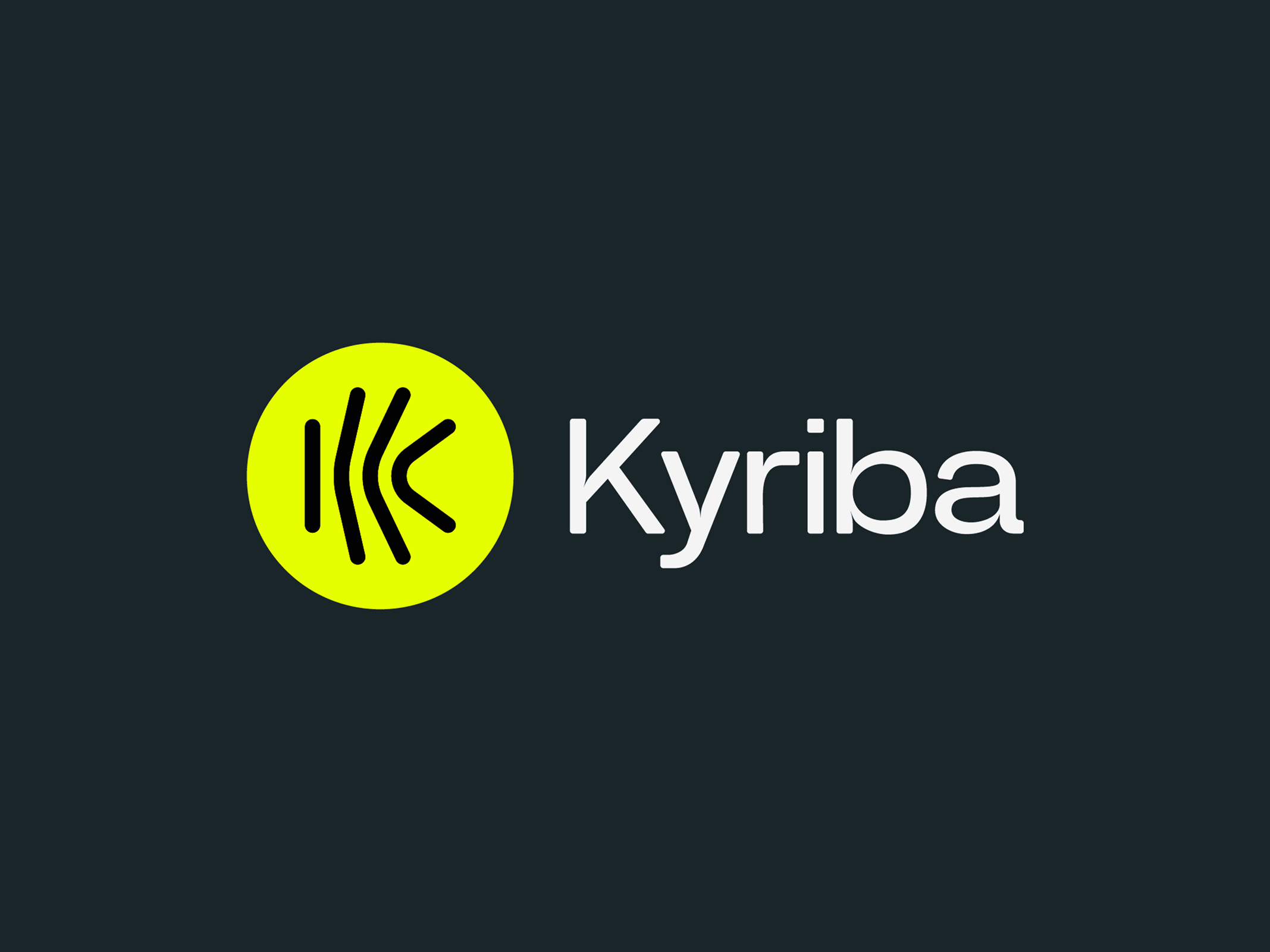Success Story
Kyriba Helps DFC Global Improve Efficiency and Become More Strategic

ABOUT DFC GLOBAL CORP.
DFC Global Corp is one of the largest providers of accessible consumer financial services in the world. By providing a wide variety of innovative and accessible financial solutions for over 30 years via a technology enabled web based underwriting and almost 1,300 retail locations throughout the world, we at DFC Global are continuously fulfilling our commitment to meet the needs of everyday consumers and business owners in the most socially responsible way.
How the corporate treasury team at DFC Global simultaneously improved efficiency and became a more strategic partner to other areas of the business.
In many corporate finance departments, siloed data, systems, and processes hamper communication and hamstring efficiency. Treasury groups that can tear down those silos not only provide better support to the company, but also position themselves to play a more strategic role in the organization.
At DFC Global, an international, non‐bank financial services business, the treasury team played a leading role in an initiative to streamline processes from cash forecasting and financial risk management to reconciliations and accounting. The team also became a strategic partner for business units looking to grow through mergers and acquisitions (M&A) or even develop new product offerings.
Treasury & Risk talked to Eric Erickson, the company’s senior vice president and corporate treasurer, about how he has overseen the evolution of his function over the past two years.
“That daily visibility into our global cash has enhanced our liquidity and has enabled more real‐time funding for us so it doesn’t tie up working capital. Moving to a common interface companywide has also reduced the risk exposure associated with maintaining user access to numerous banking platforms. SOX compliance is now much easier and better managed, because we have one master user list and centralized system admin, versus having 20-plus different admins for the various banking platforms.”
— Eric Erickson, SVP & Corporate Treasurer, DFC Global

T&R: What types of financial services does DFC Global provide?
Eric Erickson: We provide unsecured short‐term lending, secured pawn lending, check cashing, Western Union money orders and transfers, prepaid debit cards, and gold purchasing, primarily to unbanked or underbanked consumers. Our customers might have a bank account at a traditional bank, but they come to us for the convenience that we offer. We have 1,500‐plus retail locations, and they also provide services digitally. We have operations in Canada, the U.S., the U.K., Ireland, Poland, Spain, Finland, Sweden, Romania, and the Czech Republic, with retail stores in all of those countries except for the Czech Republic.
T&R: What’s the role of the treasury function within this organization?
Eric Erickson: We have a North American team of five professionals in Pennsylvania and a European team of five located in London. Both teams handle capital markets activity as well as cash management. In conjunction with the CFO, corporate treasury advises on our optimal capital structure, our debt levels, the types of debt instruments we use, and our maturity profile. We’re a U.S.‐based company, but most of our earnings are overseas, so we have to manage FX risk organically as well as synthetically through non-speculative hedging instruments.
On almost every strategic initiative, we coordinate closely with each discipline within finance. For instance, we partner with tax and accounting on all financing-related transactions to fully vet and hopefully optimize the final debt structure, including considering the currency and jurisdiction mix. Then we work with the CFO to make sure that the alternatives we ultimately put in front of the board make long‐term sense for the company, considering our leverage and corporate credit ratings. We’re responsible for making sure all those activities are coordinated and properly approved.
What are the biggest treasury challenges your organization faces?
Eric Erickson: I’d say the biggest challenge is ensuring that the corporate treasury department matures with the business. DFC Global is essentially a retailer of consumer finance products. Diversification—by product, geography, and distribution channel—is core to the company’s success and growth plans. For us, there’s no shortage of customers globally, but it’s important to strike the right balance between efficiently operating the broad business that we have today and growing, both organically and through acquisitions.
We also need to stay at the forefront of technology and innovation so that doing business with us is as convenient as possible for our customers. Within corporate treasury, we have to be a strategic partner to senior management, the board, and operations, so we need to have the right people and systems in place to support the organization. We’ve made considerable investment in both of those areas over the past couple of years. As a result, corporate treasury has become more integral, more important, and more strategic within the company.
T&R: In what ways is your treasury department strategic?
Eric Erickson: Because we’re a consumer lender, our inventory is cash. Our business revolves around the ability to provide cash to our customers and collect money from our customers. As a company, a lot of what we do revolves around banking channels. So whereas the corporate treasury department in a different industry might be focused on automating payables, at DFC Global treasury is more of a production environment.
Within the broader business, capital allocation is critical to our future success, so treasury partners with the business units to figure out where their opportunities are and how we can best allocate our capital to support the business and their growth objectives. This includes M&A opportunities as well as new product development—such as partnering with financial institutions to leverage their product suite to serve our customer base. A good example is our deployment of remote check capture technology to facilitate and expedite the check cashing process for our customers. Partnering with the business units internally not only allows us to gain efficiencies by re‐engineering processes and systems, but it could also lead to a new product offering for our customers.
T&R: How did corporate treasury evolve to this degree of strategic partnership with the business units?
Eric Erickson: A couple years ago, the company started to look at processes and really open up the hood to see where there was opportunity to achieve operational efficiencies in our back office through greater coordination and automation. Because we’re in 10 different countries, we had 20-plus different banking platforms that our operations people used to fund loans to our customers. And corporate treasury was manually tracking these 20-plus banking systems to perform activities such as cash reporting, daily cash positioning, funds transfer, etc.
So we made a deep‐dive assessment of what our processes looked like and then developed what we termed an end‐state vision. We said, ‘OK, here’s where we are today. Where is it that we really want to be? Do we have the right products and infrastructure to make doing business with us as convenient and satisfying as possible?’ We also started working with our strategic vendors—including commercial banks, card acquirers, and armored car delivery carriers—to benchmark through them and see what’s out there in the market.
T&R: Was this a companywide initiative, or was it specific to treasury?
Eric Erickson: I believe each department within the company is in a constant state of reassessment and refinement of its processes, but you could say that it was corporate treasury’s turn to comprehensively overhaul global systems. We need to have daily visibility into where our cash is globally, as well as the ability to quickly develop a cash position. The nature of our business requires getting cash to our retail outlets so that we can serve customers who come in looking for a loan, to cash a check, or to send money through Western Union. For that reason, the end result of our evaluation of our processes was that we decided to deploy a global SaaS treasury application from Kyriba.
Corporate treasury used this project not only to enhance the areas that we’re specifically responsible for, but also to automate the reconciliations that we have to perform in order to be compliant with all applicable laws and regulations. So we took a look at the needs of operations as they relate to treasury transactions—like payments, loan funding, and collections—and then considered what corporate treasury needed to automate to gain greater efficiencies. We put those concepts together and came up with a solution that addressed multiple issues, which really turned out to be opportunities for us.
T&R: So, how were you able to automate treasury processes?
Eric Erickson: Transaction and balance records flow automatically into the Kyriba system, so we have daily visibility into cash globally. We use that to develop a cash position, which tells us whether we need to borrow money from a bank or repay money to a bank. The application also manages all of our debt and helps us to calculate/verify interest accruals, interest expense, etc. Then all transactions automatically feed a model that develops a cash forecast based on the historical values, which we can modify by certain percentages based on what we expect to happen in the market. The application produces a detailed cash forecast for each of the different countries that we operate in.
Two other modules of Kyriba are important to us, as well. Because we are getting so much transaction detail, we can bring in a point‐of‐sale file and do reconciliations in an automated fashion. Historically, we did them manually, which was very time consuming. We’re also using a payments module. The typical company uses this module to pay vendor invoices, but we use it to automate funding loans to our customers. It also provides a lot of file validation, which ensures that we don’t fund customers in excess of their daily limits, process duplicate payment files, etc.
T&R: What were some lessons you learned through the process and technology upgrade?
Eric Erickson: Well, I’ve been in treasury a while and have implemented a number of different workstations, but I did learn one lesson on this project. Everyone fears scope creep, but for us scope creep was a good thing. When we started this implementation, Kyriba communicated that there were additional modules that the company might be able to benefit from, but we didn’t truly know whether the system would have application within the broader company. To our pleasant surprise, we ran tests which revealed that several additional modules, including reconciliations and payments, are able to bring a lot of efficiencies to our business units. Now that we’ve proven the concept, we have other internal customers standing in line, waiting for us to roll out these modules for their business units as well.
So the lesson learned is to stay flexible. And you don’t just need a good understanding of corporate treasury, but you should also do a little homework on the potential for corporate treasury improvements to affect other departments. Broadly speaking, you need to understand the back offices of each of your different business units and then figure out how to get buy‐in from all the managers whose processes you can improve.
T&R: How did you get buy‐in from the diverse business units?
Eric Erickson: We’ve grown by acquisition, and processes were very different from country to country. Corporate treasury partnered with the businesses to understand how each division fits into the broader finance department and what they might want their end‐state vision to look like. Then we put together a presentation that outlined an end‐state vision that addressed not only reconciliation, but also accounting and payments. At the end of the day, all our different divisions are going to have a common solution that will be more efficient. They’re also going to get re‐engineering and commonality from a training perspective. Identifying the benefits for each individual business unit and then having a strategic conversation with them helped make our software implementation a lot smoother. Having senior management support, specifically from the CFO, doesn’t hurt either. This aspect greatly facilitated the overall implementation.
T&R: What advice do you have for a corporate treasurer who is looking to play a more strategic role?
Eric Erickson: Think about how corporate treasury can partner with all the different disciplines within finance, as well as the various business units. Understand their needs for capital. Look at how corporate treasury interfaces with tax and accounting, specifically. The more hooks you get into other departments, the more strategic and the less siloed you become. You want people to stop seeing corporate treasury only as the people they should turn to if they need to wire funds. Instead, make sure that each department understands the value you can add and the access you have to strategic vendors, including software vendors and banks.
Also, take advantage of your relationships with those strategic vendors. Our banks see what other companies are doing, and they continue to bring new ideas to us. This type of project is definitely a challenge. You have to manage up, manage across, and manage down. To become more strategic, you have to proactively seek out opportunities for corporate treasury to add value to every department within the company.










